Razer Blade 15 (2018) review
Cut-throat tactics sees Razer create the world's smallest 15.6in gaming laptop - and it's an ultra-powered beast
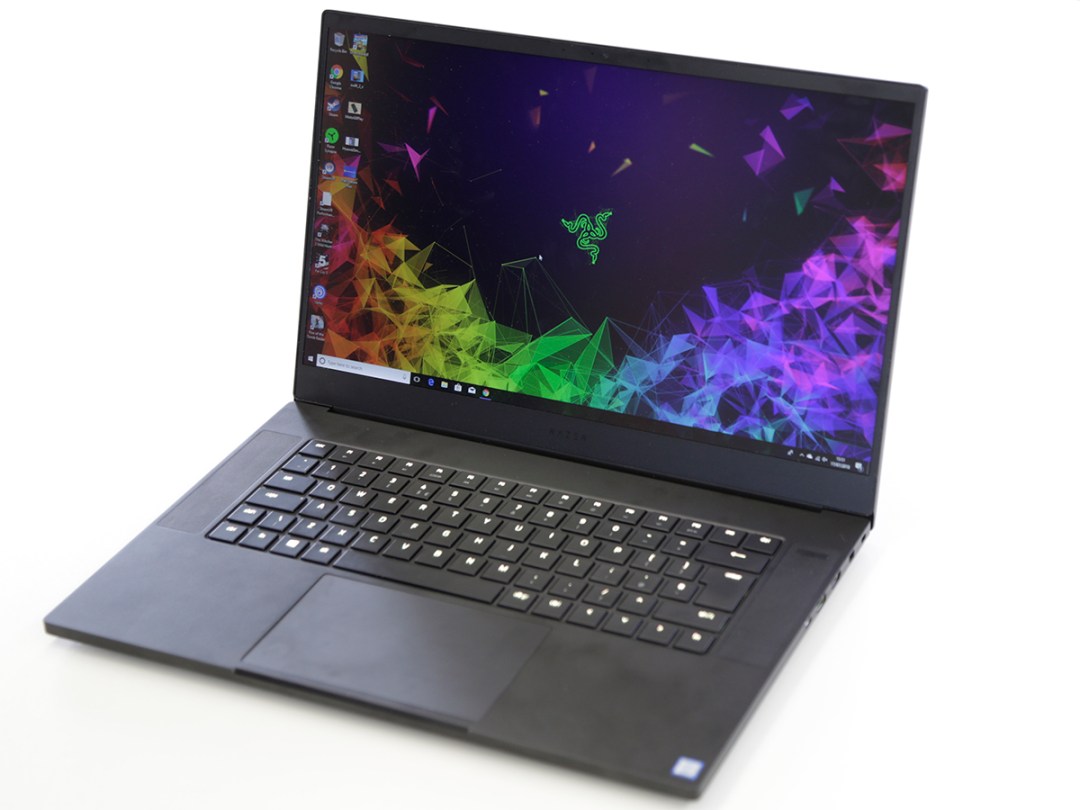
Time was, when it came to gaming laptops you had to choose between hulking monstrosities that would give even give Dwayne Johnson a crooked spine if hauled around in a rucksack, or lightweight weaklings that could barely run Candy Crush, never mind the hordes of hyper-realistic multiplayer shooters that PC nerds worship.
These days though, gaming laptops have finally cracked the balancing act between portability and power, and there’s no better example than the new Razer Blade 15.
At 2.07kg, it’s light enough to bring to work without causing your back any grief, yet packs the power to play absolutely any video game you please, even with graphics cranked up to the max.
But of course, to create such a portable powerhouse, the designers at Razer had to either make a few compromises or sell their soul to the devil – and judging from the battery life and how ridiculously hot this laptop can get, my money’s on the former.
Design
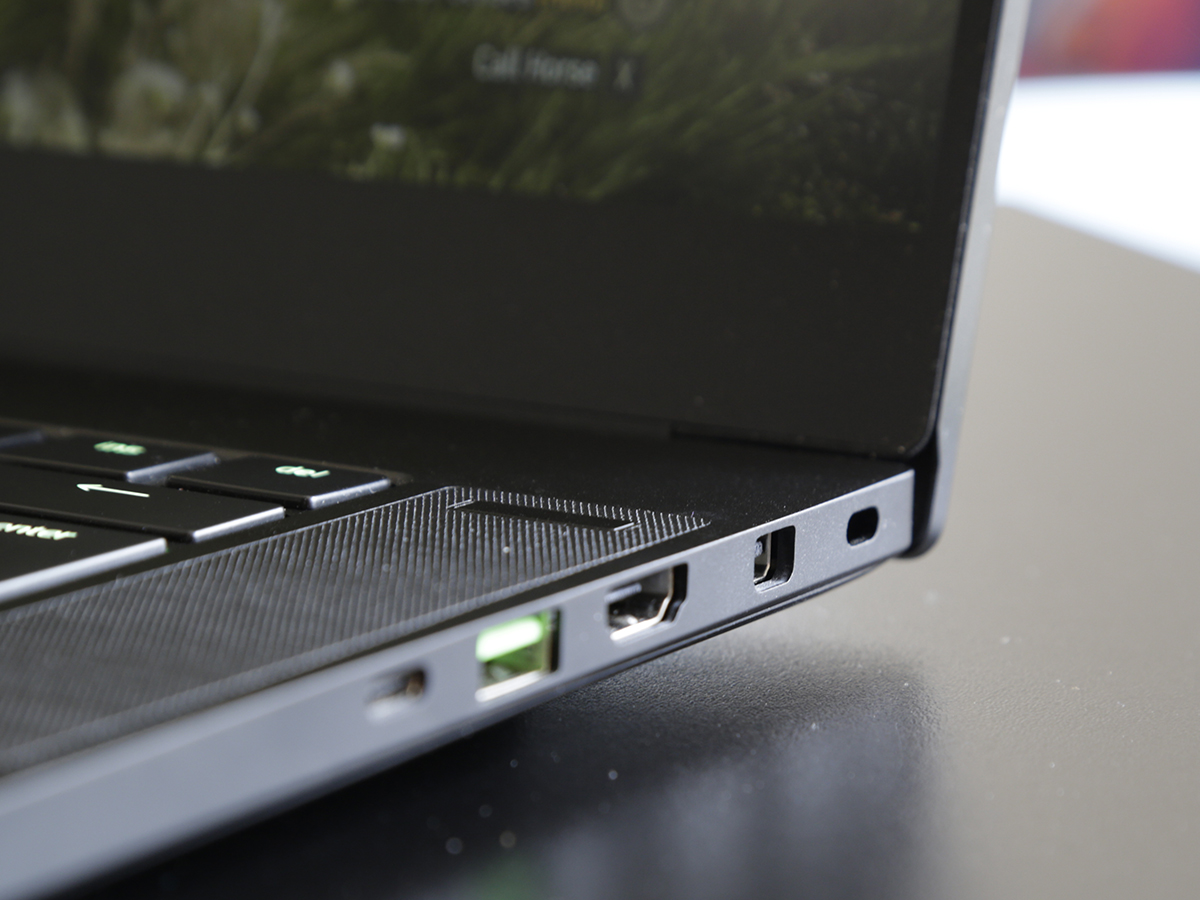
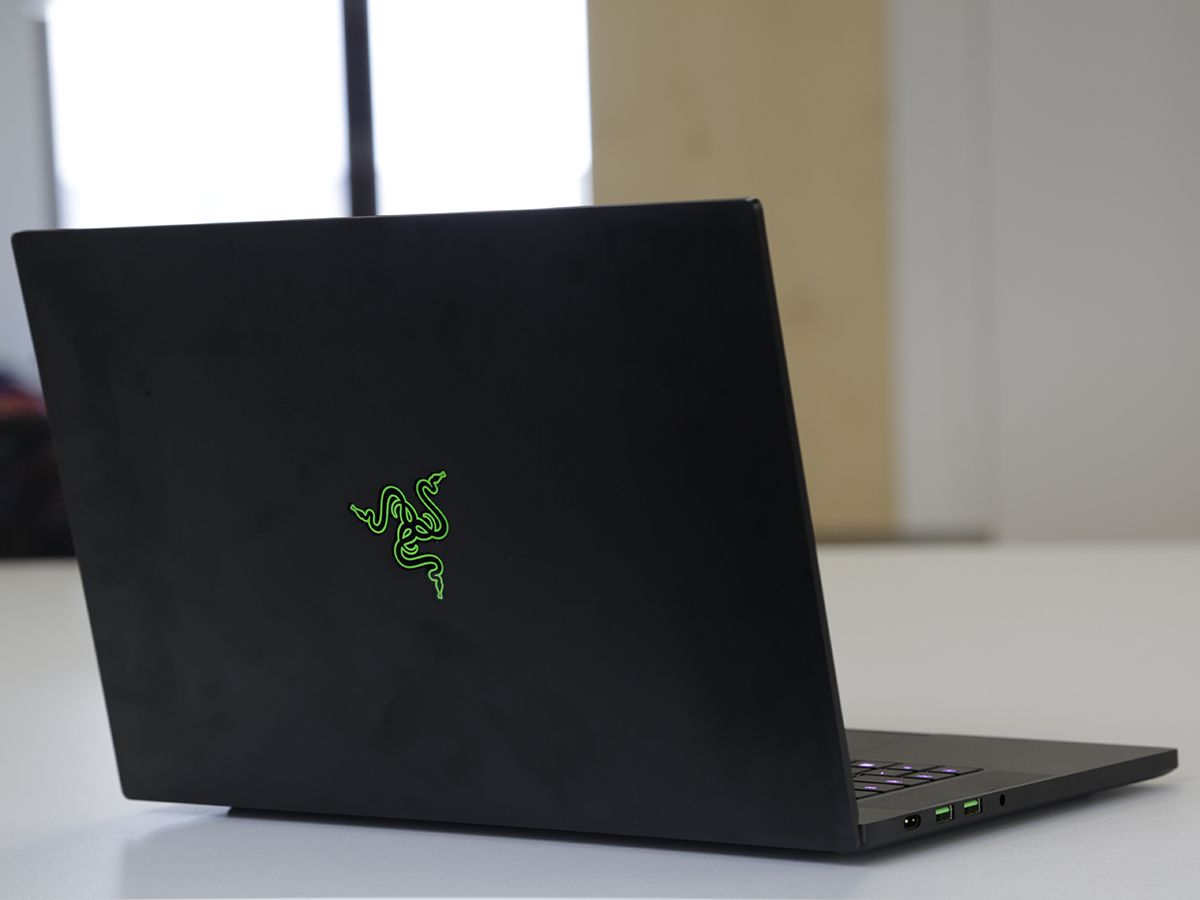
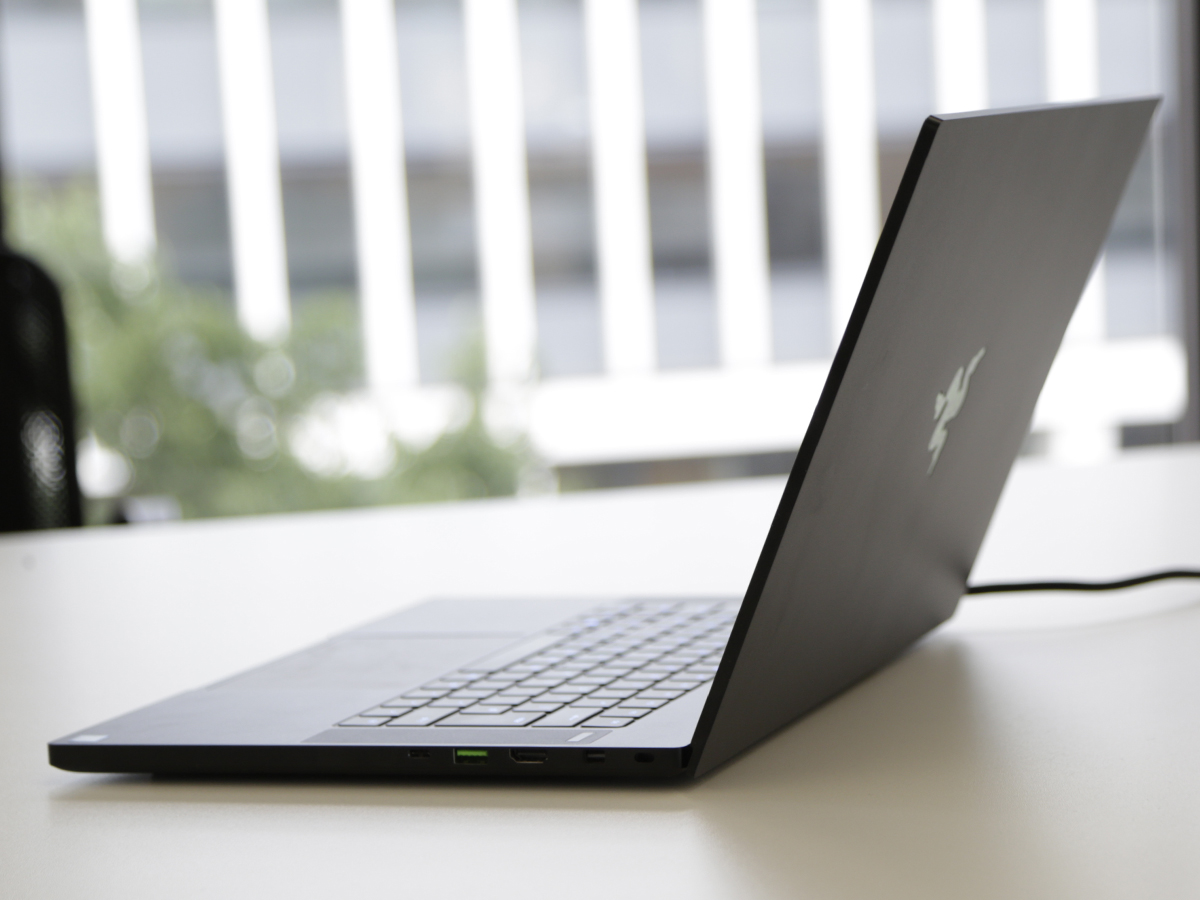
After lifting the Razer Blade 15 out of its box and seeing it in the flesh for the first time, I swear I got butterflies. In fact, I reckon this is the best looking gaming laptop out there.
A deep-black slab of aluminum makes up the unibody, which not only looks ultra-stylish and sleek, but also has a very premium feel. No matter how hard I shook this laptop, the monitor didn’t wobble once. Speaking of which, the sizeable 15.6in screen looks absolutely gorgeous housed within the ultra-skinny bezels. Don’t worry, Skypers, there’s still room for a subtle webcam up top.
Wherever you look, the Blade 15 has a very tidy and elegant look. The keyboard is sandwiched between two front-firing speakers, with the power button nestled in the right-hand one to prevent any hint of clutter. Even when closed it looks fantastic thanks to Razer’s glowing green emblem. My one criticism, though, is that the laptop’s surface is a total fingerprint magnet, and can look rather grimy after a couple of gaming sessions. Good job there’s a cloth bundled then.
At 16.8mm thin, Razer claims (on release) this is the world’s smallest 15.6in gaming laptop. It’s truly astonishing how Razer has been able to cram such beefy internals inside this compact machine. And while it may be a tad heavier than you’d expect looking at its slender frame, at just over 2kg transporting it around in your rucksack is a cinch.
And not to be understated, the Blade 15 has all the ports a gamer could possibly want. There’s three USB ports for various peripherals, a headphone jack, a mini DisplayPort, a Thunderbolt 3 and a HMDI in case you want to game on the big screen.
Keyboard and trackpad
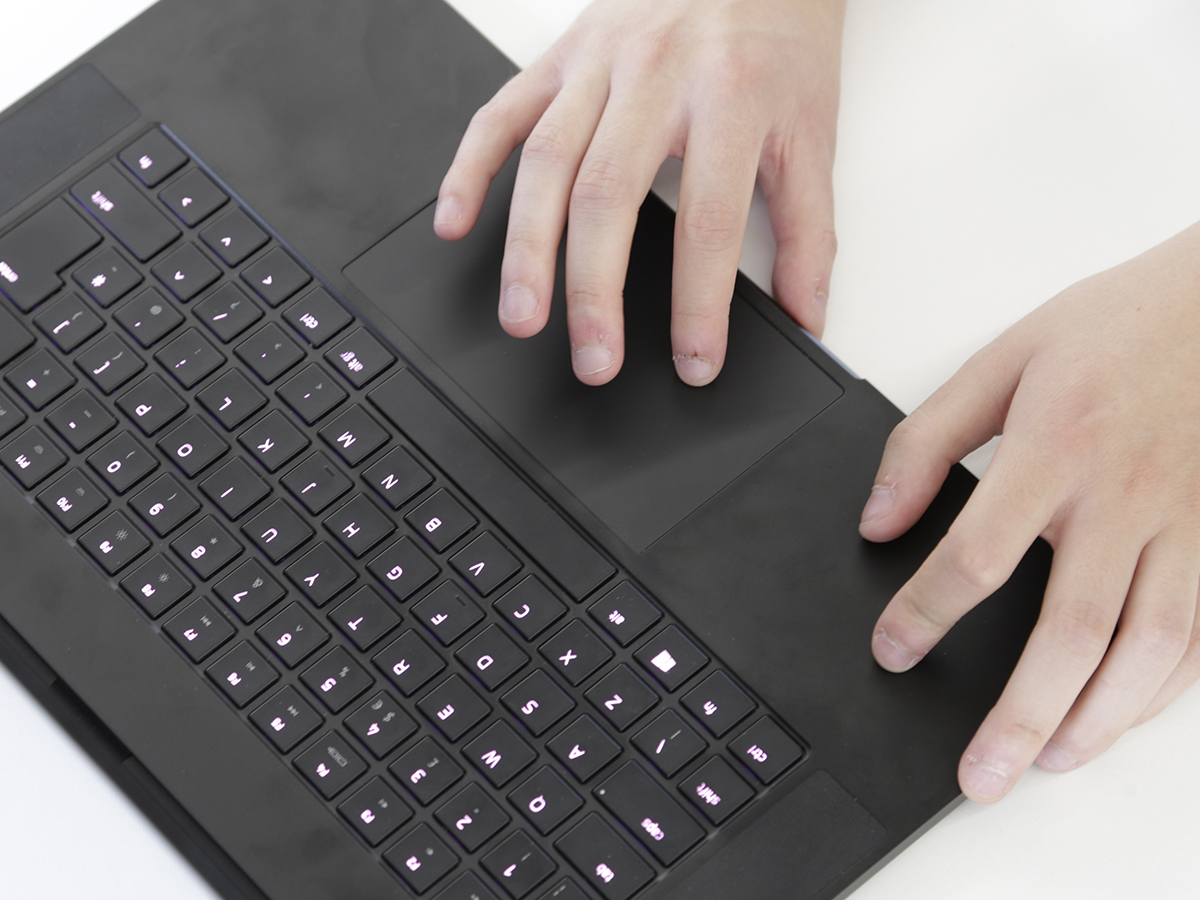
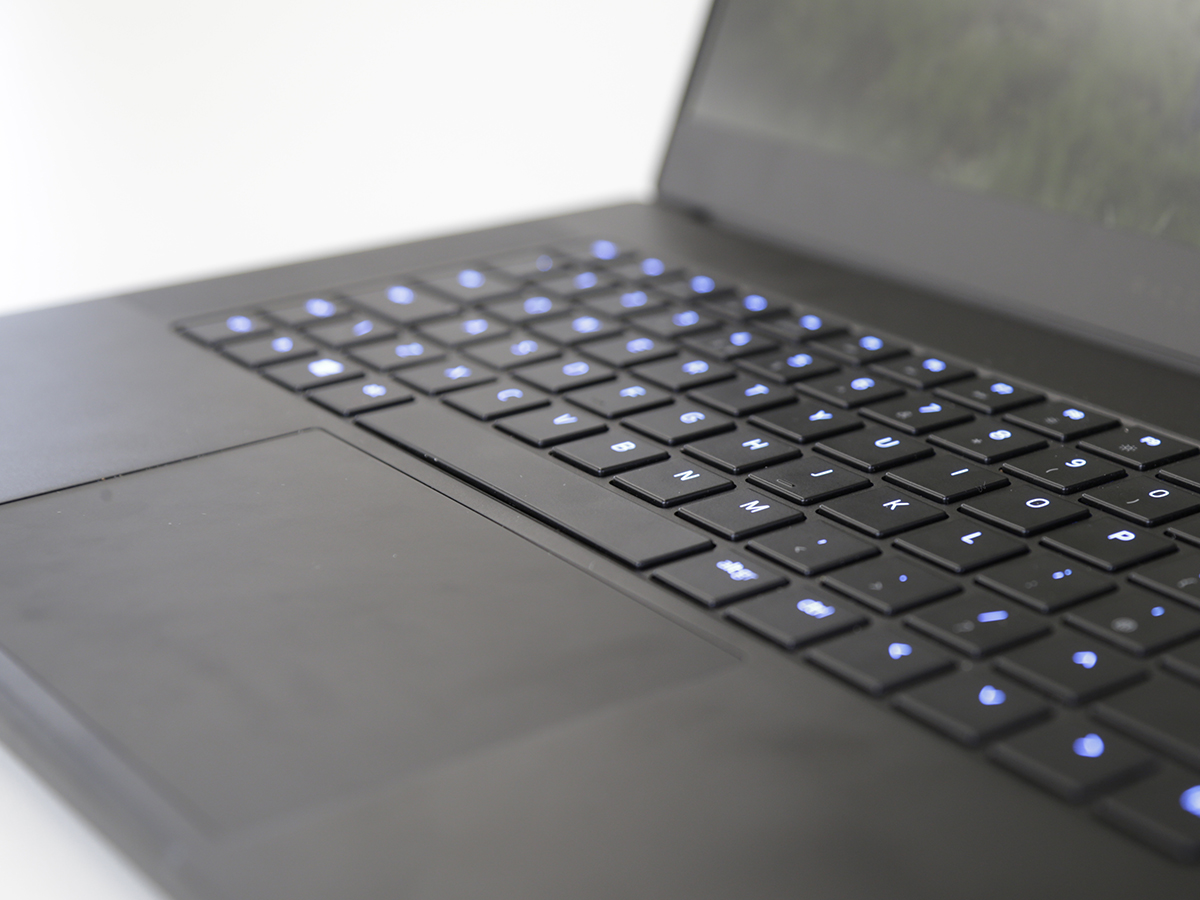
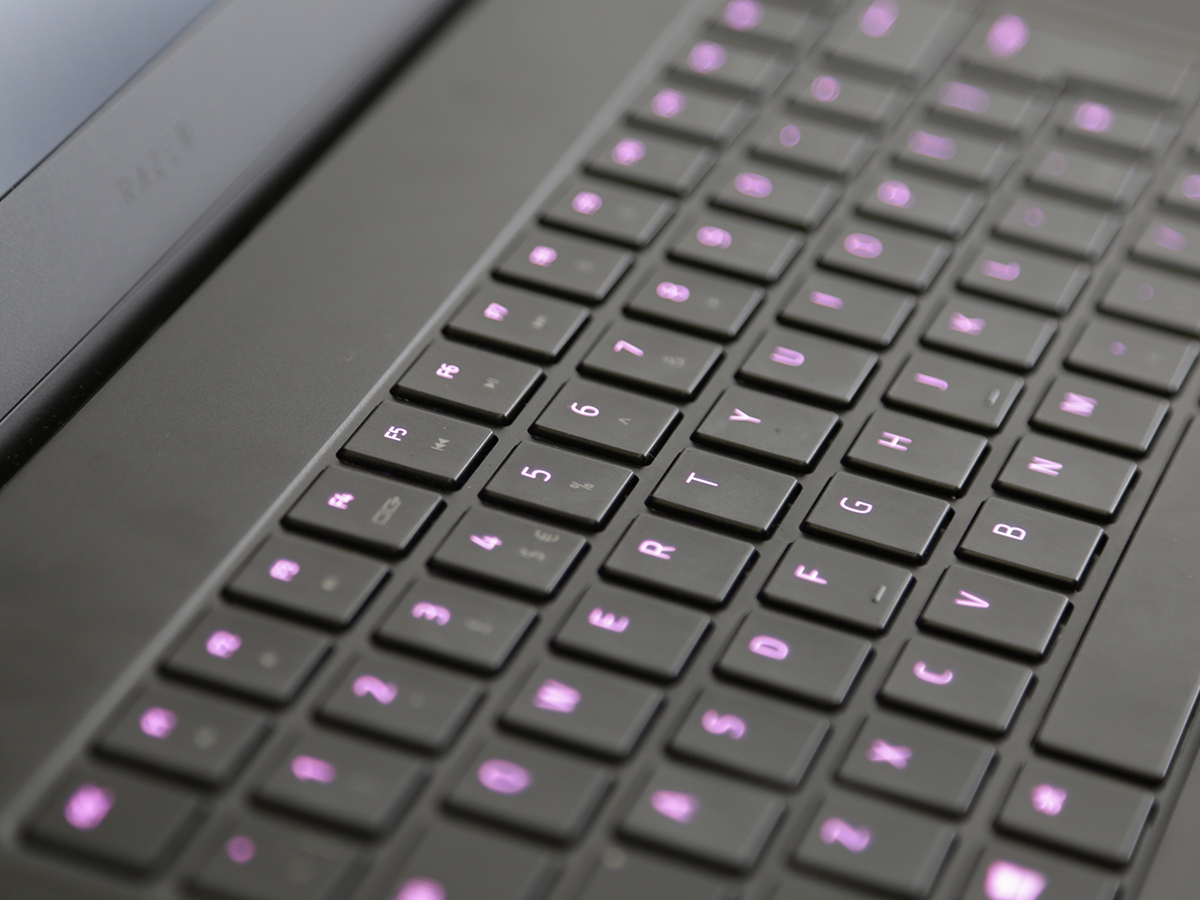
Turn the thing on, and the Blade 15 gets even prettier. The RGB-backlit keyboard springs to life, cycling through various colours like a mesmerising Aurora effect. Sure, this can get a little distracting when playing a game in a dark room, but you’re free to meddle with the settings and turn the lights off.
The keys themselves have just about the right amount of satisfying click. I’ve experienced no problems writing up this review. There’s enough spacing between keys to prevent any accidental grenade equips too.
Then there’s the bittersweet large glass trackpad below. On one hand, it gives you more space to control the camera in shooters, but I found myself accidentally brushing it on numerous frustrating occasions during non-gaming activities. The trackpad also lays claim to one of my personal pet peeves, opting for a clickpad instead of physical buttons.
But before I bash the trackpad too much, it’s satisfyingly smooth to the touch and extremely responsive with Microsoft Precision Touchpad support, which should please competitive FPS fans.
Display
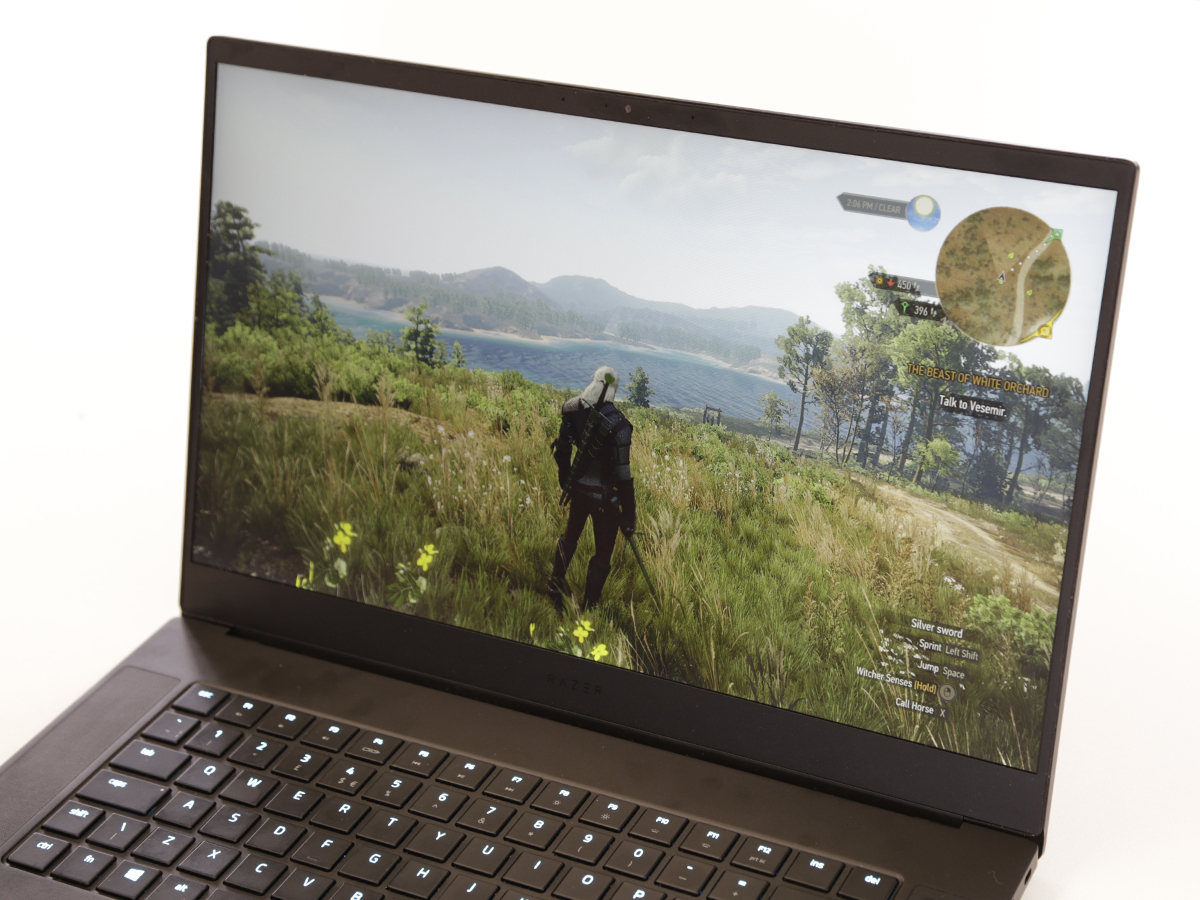
Booted up and logged in, I almost forgot about how great the Blade 15’s design looks, instead becoming transfixed on the colour-popping screen. This 15.6in 1920×1080 display is a serious looker.
Playing The Witcher 3, I couldn’t resist the occasional pause in my journey to ogle the sunburnt skies and emerald foliage. And with the 100% sRGB colour gamut, vibrant video game worlds really do burst from the screen as if launched by a confetti cannon.
The display is incredibly bright too, even when reduced to 50%. The matte coating also made sure that sun glare never obstructed my view and left my character open to decapitation.
Upgrade from the base model, and your display will get a 144Hz refresh-rate boost. This provides a smoother and more responsive experience, which is a huge boon for those frantic multiplayer matches where even nano-seconds count.
Too much of a resolution snob to enjoy Full HD? Then you can opt for the upcoming top-of-the-range Razer Blade 15 model, where you’ll get a 4K display that will no doubt look even more glorious. Sadly, I wasn’t able to talk Razer round to giving me an early sneak peek.
Performance
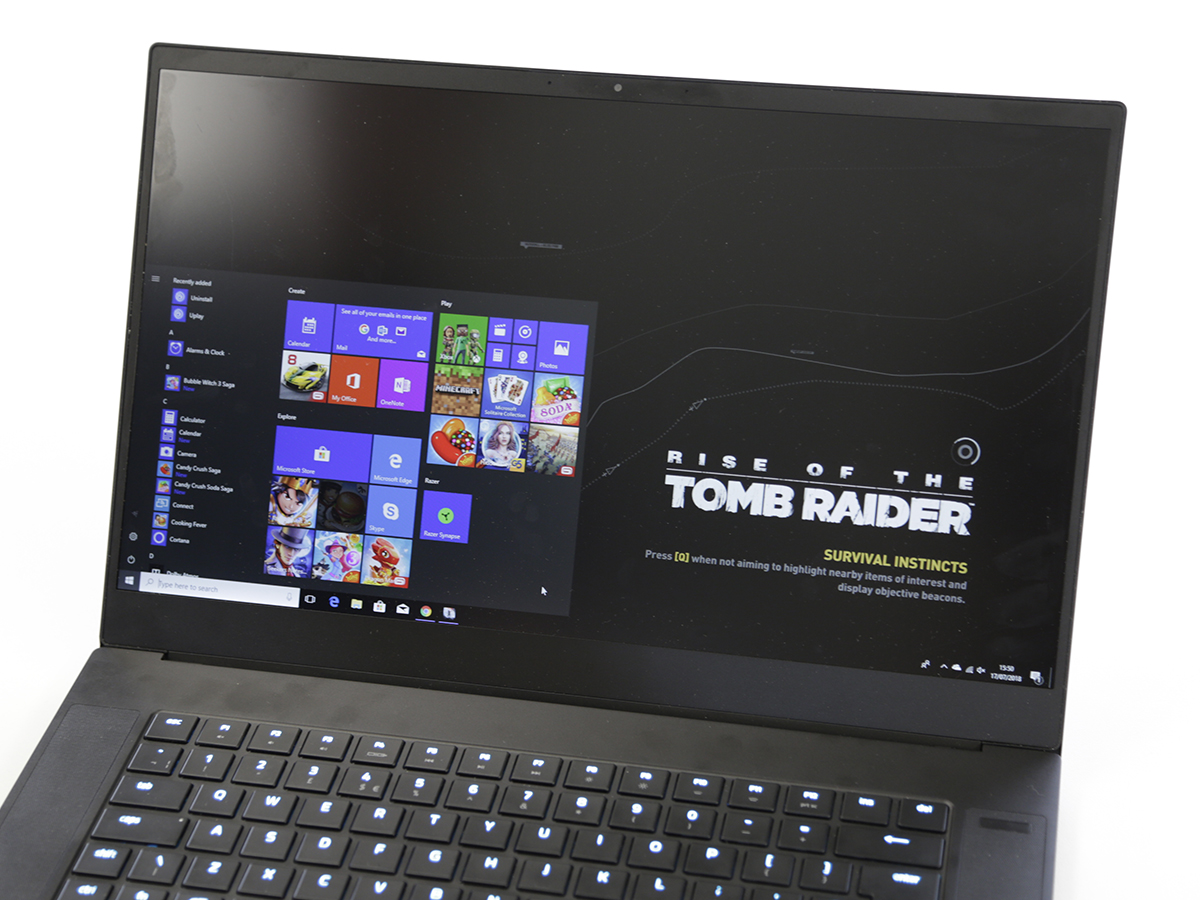
Of course, you can’t just whack a snazzy display on any laptop and expect console-crushing visuals. You’ll need an all-powerful graphics card too.
Whether you settle for the low-end model‘s NVIDIA GeForce GTX 1060 GPU or upgrade to the £2150 mid-ranger’s GTX 1070, you’ll be able to download any game from Steam without worrying whether your hardware’s up to the task. There’s even enough muscle here to run the Oculus Rift and HTC Vive if you’re a virtual reality geek.
Actually, that’s not doing this machine justice. With the GPU working in unison with the 8th-gen Intel Core i7 processor and 16GB of RAM, I was able to crank the graphic settings to the max for the likes of The Witcher 3 and Rise of the Tomb Raider – two of the most notoriously demanding titles.
With the visuals set to ‘Ultra High’, which included 60fps, both games ran incredibly smoothly with little to no hiccups. Everything looked sublime too, with dirt clouds and snowflakes showcasing staggering fine detail. But as soon I began to marvel at how well this sleek laptop was able to handle such might, I began to notice how hot its underside was becoming. We’re not talking about mildly annoying heat here either – this was near-on scalding temperatures.
The built-in Vapor Chamber Cooling System clearly can’t cope with the power involved here, but that’s the trade-off for getting such a compact, portable unit. But it’s difficult to forgive the Razer after shelling out around £2000, especially since that means you’re going to need a desk or some kind of dinner tray to sit this thing on every time you fancy playing a AAA game.
Even outside of gaming, the Blade 15 can heat up to a noticeable degree. That said, it’s always super-speedy when navigating Windows 10 and the web, never once crashing or slowing down when things were heating up.
Battery life
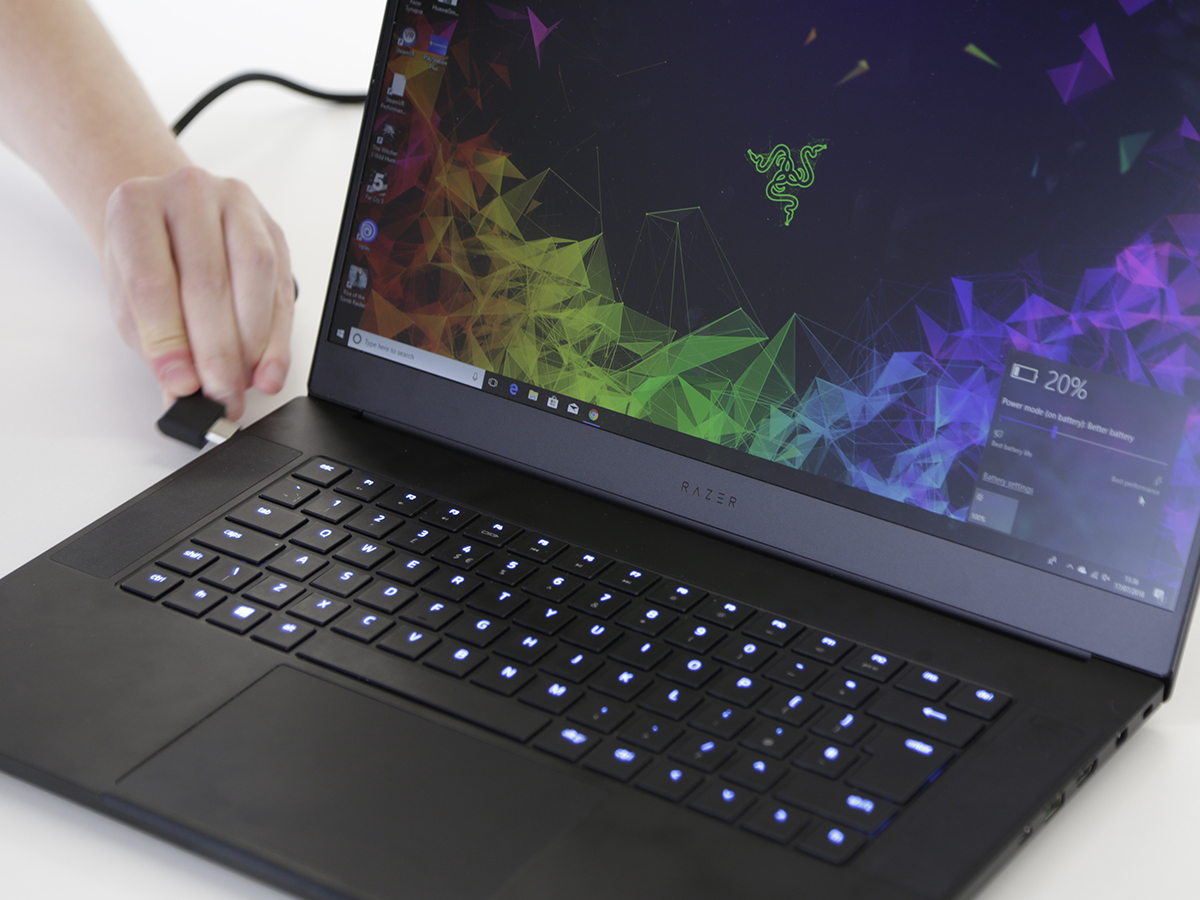
For all the good the Blade 15’s design is for portability, you’re not going to be able to cope for too long away from a power socket. While playing The Witcher 3, it only managed a measly hour before blacking out. That said, I had all the graphic settings set to their prime, as well as the brightness to 100%. If it survived much longer, I’d likely hail it as the Second Coming.
The Blade 15 allows you to fiddle with many settings to eke as much stamina out of your machine as possible. You can turn the brightness down, sacrifice performance power for battery life and even turn off the RGB lights on your keyboard. And of course, it also depends largely on the game you’re playing. While The Witcher 3 and Rise of the Tomb Raider are best reserved for home-bound gaming, the likes of Fortnite and Overcooked! are fair game in Starbucks.
Shell out this much money, and you’ll probably want the Blade 15 for more than just gaming. I also tested how long it could muster playing HD video with the brightness scaled down to 50%. It managed a little over 4 hours. That’s not exactly impressive, but at least it’s good enough for watching a film or two on a long-haul flight.
But again, fiddle with the settings and it’s possible to get a couple more hours of battery life out of the Blade 15. After dimming down the keyboard and adjusting the screen’s refresh rate from 144Hz to 60Hz, I was able to extend the HD-video playback to six hours. That’s clearly much better, but it’s a tad annoying having to tweak the settings everytime you switch between gaming and on-the-go Netflixing.
Razer Blade 15 (2018) verdict
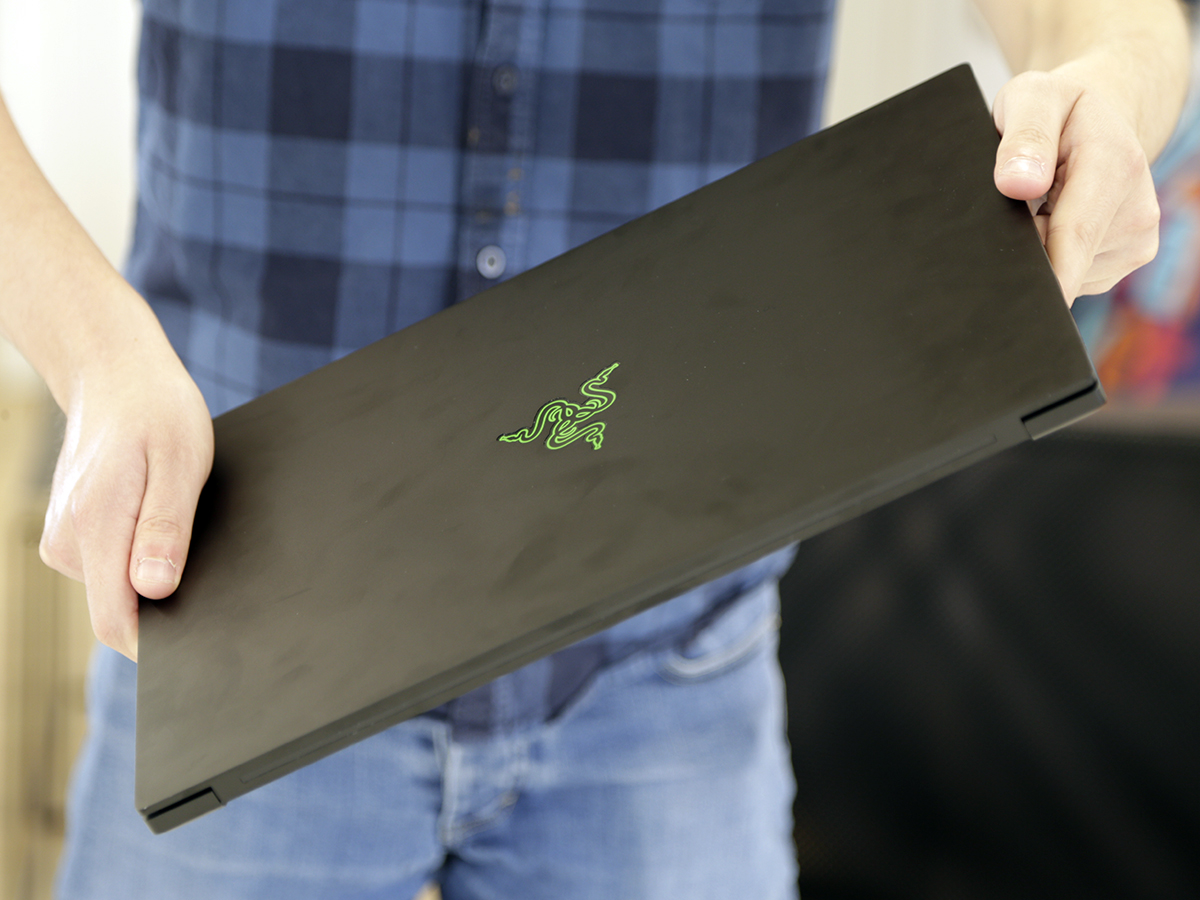
If you’re dead set on a laptop to fulfill your PC gaming needs, then the Razer Blade 15 is one of the best buys available. It’s an absolute powerhouse, has a beautiful display and is a portable marvel. Plus, it looks the real deal and could easily infiltrate the office without attracting a glare from your boss.
But when you’re spending over £2000 on something, you want it to be near-on faultless, and that’s just not the case here. The battery life is lacklustre for a machine that boasts portability and that heating issue is frustratingly inconvenient at best.
If you’re willing to overlook these flaws though, you’re getting a monster of a machine in return – one that I’d seriously consider replacing my PS4 with had I £2330 lying around…
Tech specs
| Display | 15.6in 1920×1080 IPS, 60Hz/144Hz |
| Processor | 8th-gen Intel Core i7-8750H |
| Graphics card | NVIDIA GeForce GTX 1060/1070 |
| RAM | 16GB |
| Storage | 256GB/512GB |
| Operating system | Windows 10 |
| Dimensions | 355x235x16.8mm, 2.07kg |
Stuff Says…
This ultra-portable has enough power to make your games console jealous, but it can also get unbearably hot
Good Stuff
Incredible performance for a portable
Dazzling display, especially with 144Hz
Sleek and stylish design
Bad Stuff
Can get ridiculously hot
Underwhelming battery life



